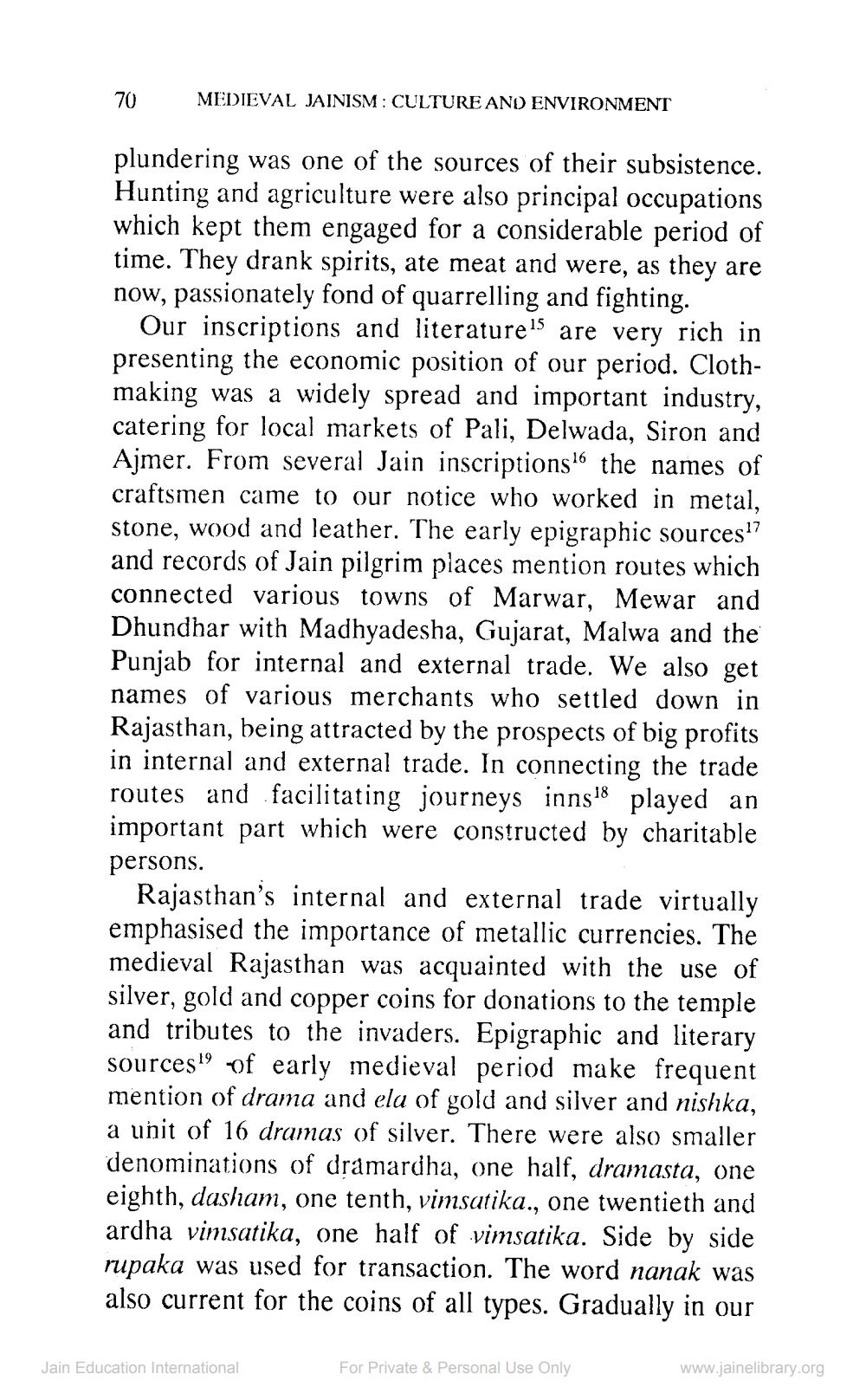________________
MEDIEVAL JAINISM : CULTURE AND ENVIRONMENT
plundering was one of the sources of their subsistence. Hunting and agriculture were also principal occupations which kept them engaged for a considerable period of time. They drank spirits, ate meat and were, as they are now, passionately fond of quarrelling and fighting.
Our inscriptions and literaturels are very rich in presenting the economic position of our period. Clothmaking was a widely spread and important industry, catering for local markets of Pali, Delwada, Siron and Ajmer. From several Jain inscriptions the names of craftsmen came to our notice who worked in metal, stone, wood and leather. The early epigraphic sources!? and records of Jain pilgrim places mention routes which connected various towns of Marwar, Mewar and Dhundhar with Madhyadesha, Gujarat, Malwa and the Punjab for internal and external trade. We also get names of various merchants who settled down in Rajasthan, being attracted by the prospects of big profits in internal and external trade. In connecting the trade routes and facilitating journeys inns8 played an important part which were constructed by charitable persons.
Rajasthan's internal and external trade virtually emphasised the importance of metallic currencies. The medieval Rajasthan was acquainted with the use of silver, gold and copper coins for donations to the temple and tributes to the invaders. Epigraphic and literary sources!9 of early medieval period make frequent mention of drama and ela of gold and silver and nishka, a unit of 16 dramas of silver. There were also smaller denominations of dramardha, one half, dramasta, one eighth, dasham, one tenth, vimsatika., one twentieth and ardha vimsatika, one half of vimsatika. Side by side rupaka was used for transaction. The word nanak was also current for the coins of all types. Gradually in our
Jain Education International
For Private & Personal Use Only
www.jainelibrary.org




